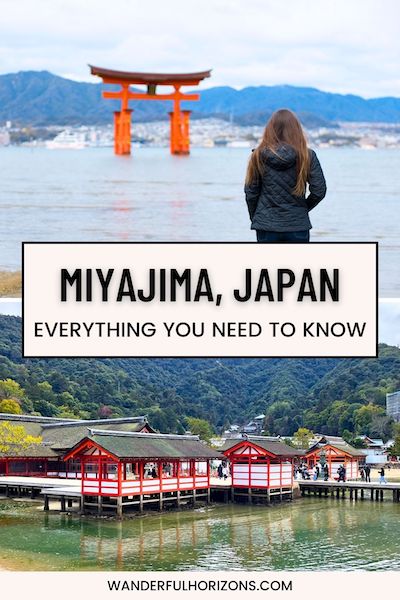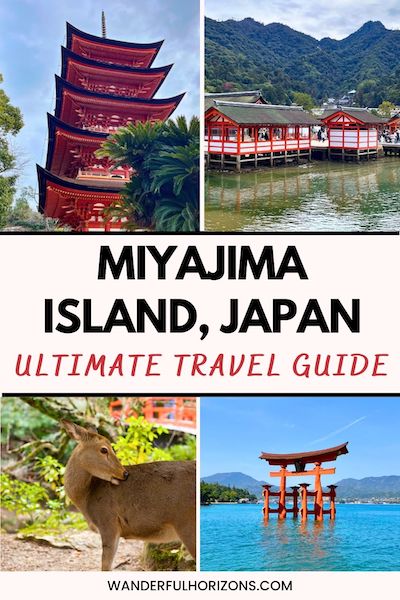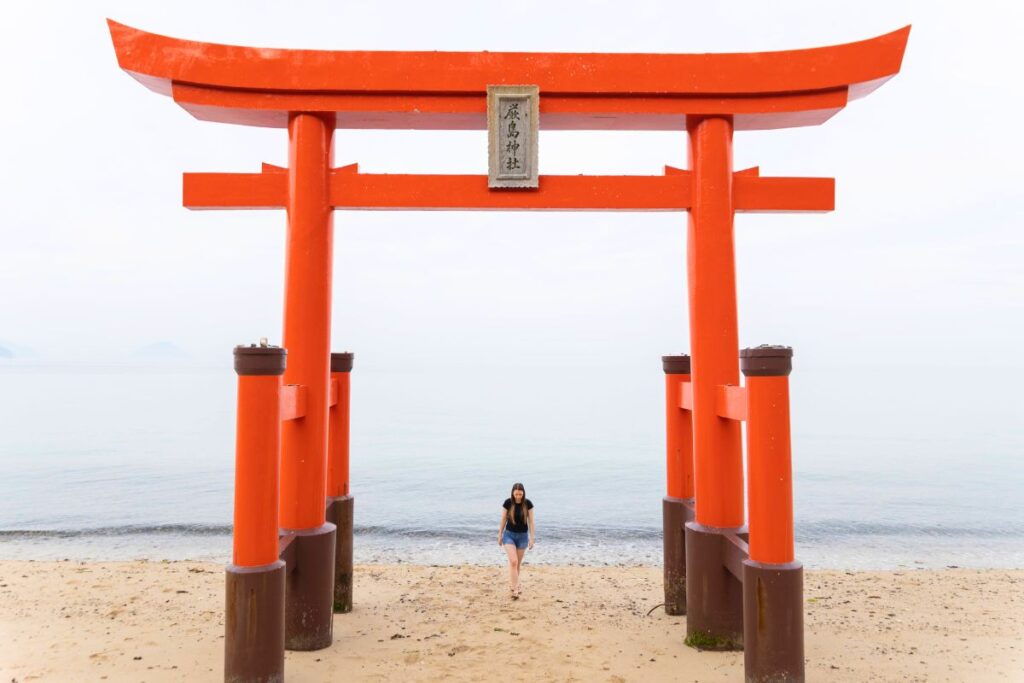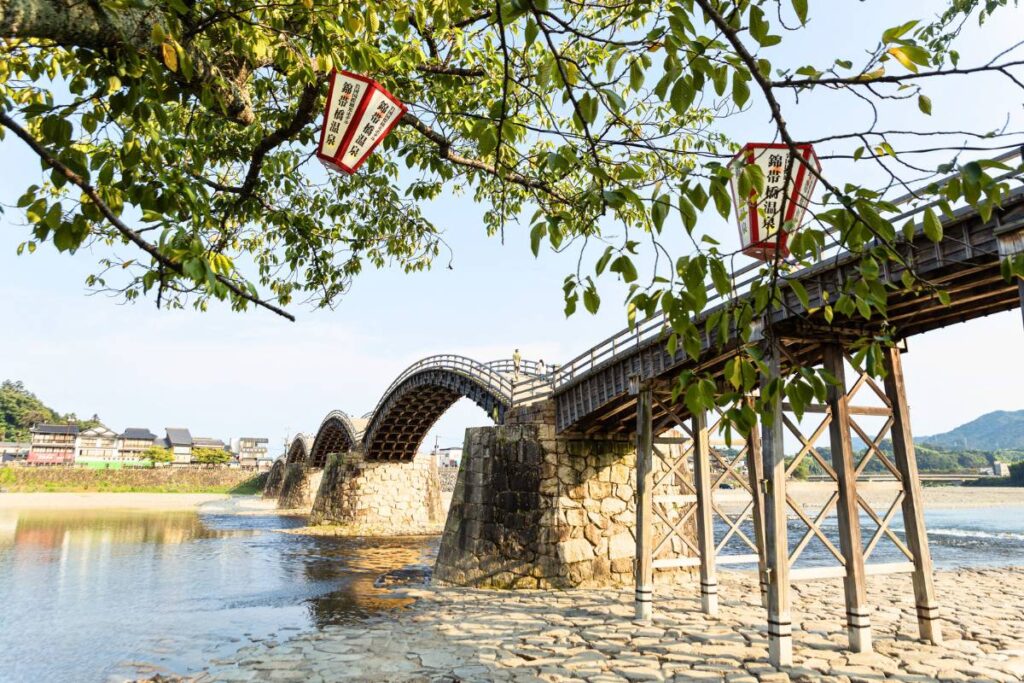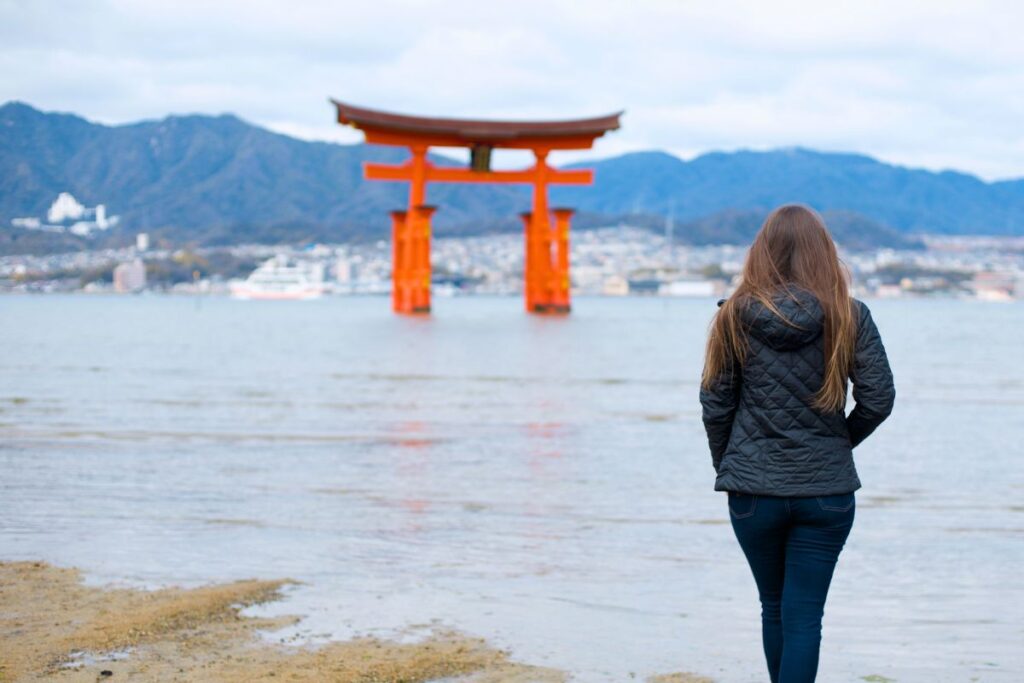
Planning a trip to Miyajima Island? But aren’t sure how to get there? Don’t worry! I’ve got you covered with this complete guide on how to get to Miyajima!
Known for its scenic views, impressive cultural sites, unforgettable seafood, and sacred wildlife, Miyajima is an incredible destination!
In fact, I’ve been to the island several times now and it never disappoints! There’s just so much to do and see here – so many hidden gems waiting to be discovered.
And thankfully, it’s not too difficult to get to regardless of where you’re coming from.
Whether you’re traveling from Tokyo, Kyoto, Osaka, or Hiroshima, there are numerous transportation options available. So, you should have no problem finding the one that works best for you!
To help you navigate all of this, I’ve outlined below several step-by-step directions detailing how to get to Miyajima!
*Please note: This post contains affiliate links to trusted partners. If you make a purchase using these links, I will earn a commission at no extra cost to you. Thank you for your support!
Planning a last-minute trip to Miyajima Island?
Here are a few quick recommendations for you!
I suggest booking these services and activities in advance!
🚅 Getting To Hiroshima:
– Japan Rail Pass (Great option if you plan to travel all over Japan)
– Individual Shin Tickets (Will likely be cheaper if you don’t plan to visit many cities)
– Private Airport Transfer (For those flying into the city)
⛴️ Ferry Options for Miyajima:
– JR West Miyajima Ferry (Departs from Hatsukaichi, accepts JR Pass)
– Aqua Net Direct Ferry (Departs from Hiroshima Peace Park)
– Seto Inland Sea Steamship (Departs from Hiroshima Port & the Grand Prince Hotel)
👣 Activities & Tours:
– Guided Tours of Miyajima (There are lots of options to explore!)
Where is Miyajima Island?
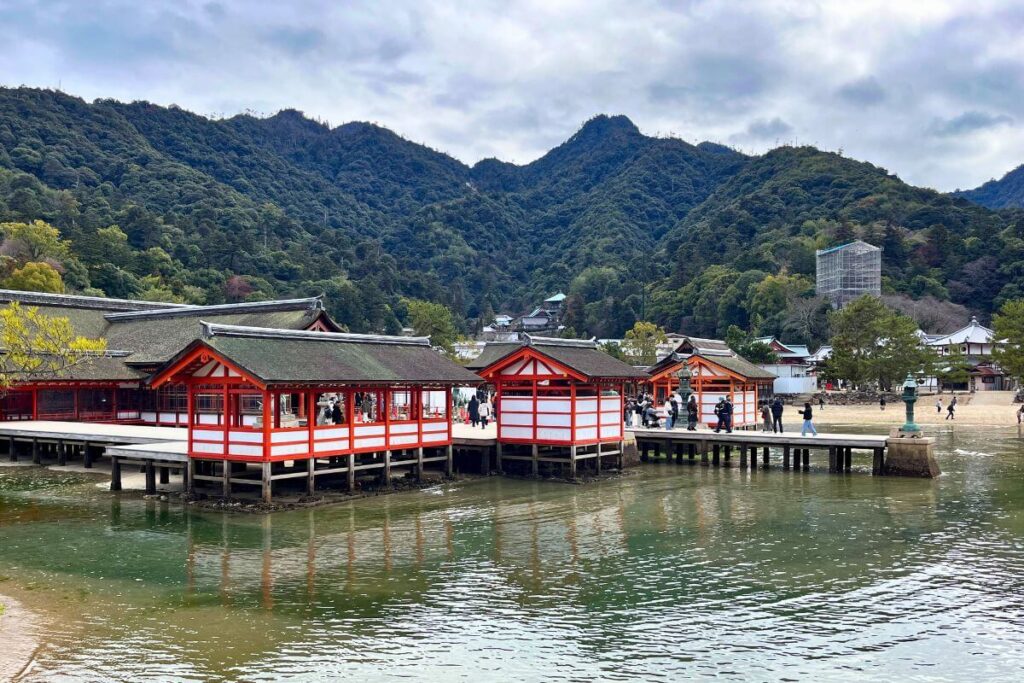
Itsukushima Shrine as the tide rises.
Miyajima is located just south of Hiroshima City in Hiroshima Prefecture.
The island lies within Hiroshima Bay, which sits off the southeastern coast of Honshu, Japan’s largest island.
The closest airports to Miyajima are Hiroshima Airport (HIJ) in Mihara and Iwakuni Kintaikyo Airport (IWK) in Iwakuni.
Meanwhile, the closest train station is Miyajimaguchi Station, which lies just across the water in Hatsukaichi.
Given the island’s close location to Hiroshima City (about an hour away), many visitors combine the two destinations and visit them both in one trip.
🌟 If you’re interested in doing this, be sure to check out my itinerary for 2 Days in Hiroshima and Miyajima.
How to Get to Miyajima Island
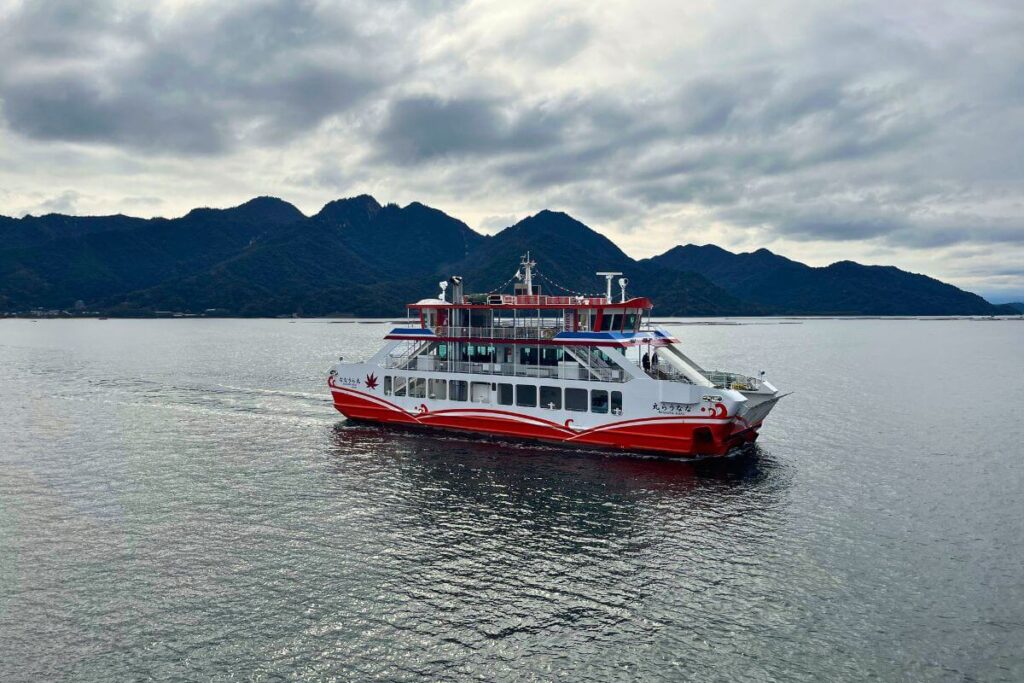
The island of Miyajima is accessible only by ferry. As of writing, there are three ferry terminals available for visitors – all of them located near Hiroshima City. Below, I’ll break down these options and provide directions from a few of Japan’s most popular cities.
How to Get to Miyajima From Tokyo
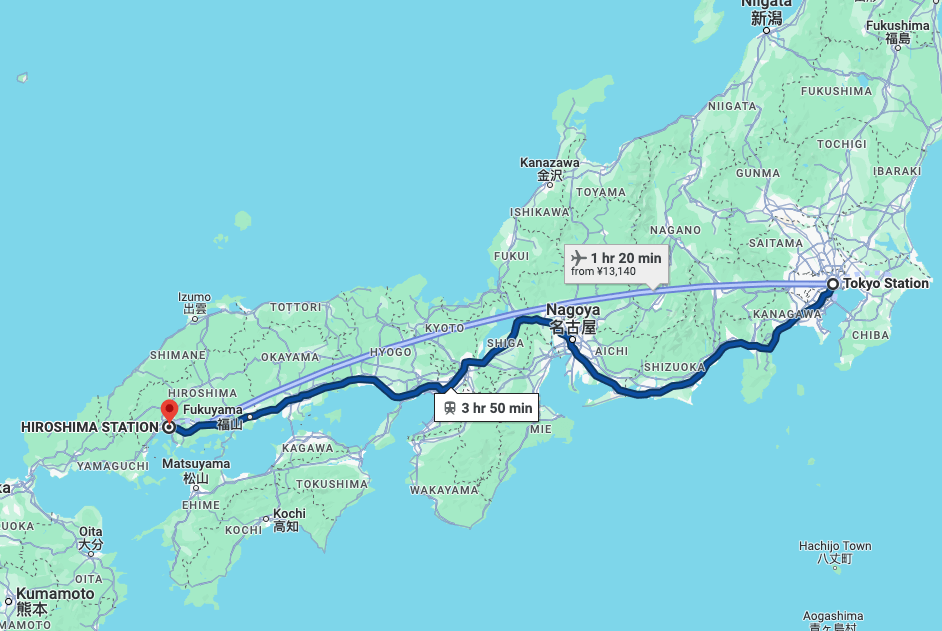
When transiting from Tokyo to Miyajima, you have two options to consider. You can either hop aboard a bullet train or catch a flight down to Hiroshima.
Train Travel
For those traveling by train, the easiest option is to take the Nozomi train from Tokyo Station to Hiroshima Station. This route will get you to Hiroshima in about four hours with no transfers.
While this is the fastest option, it’s important to note that it’s not completely compatible with the Japan Rail Pass.
This is because the Nozomi train requires the purchase of a separate complimentary ticket. These tickets can be obtained upon arrival at the train station if needed.
An alternative option that accepts the JR Pass in full is the Hikari train. You can take this train from Tokyo Station to Shin-Osaka, Shin-Kobe, or Himeji Station. From any of these destinations, you can then transfer to the Sakura train.
This route, with transfers included, will get you to Hiroshima Station in about five hours.
Upon your arrival, you will have the option to choose from three nearby ferry terminals. Please see the section below on “How to Get to Miyajima From Hiroshima” for further directions.
Plane Travel
If you prefer to fly, there are several daily non-stop flights that travel between Tokyo and Hiroshima Airport.
Transit times for this takes about an hour and a half in total with flights depart from both Narita and Haneda airports.
Once you land in Hiroshima, you’ll need to travel another hour to actually reach the city.
There’s an airport limousine bus that offers direct rides to Hiroshima Station. Or, alternatively, you can grab a shuttle bus to Shiraichi Station and then take the San-yo Line to Hiroshima Station.
You can also book a private airport transfer into the city, if you prefer.
Upon your arrival , you’ll have the option to choose from three nearby ferry terminals. Please see the section below on “How to Get to Miyajima From Hiroshima” for further directions.
How to Get to Miyajima From Kyoto
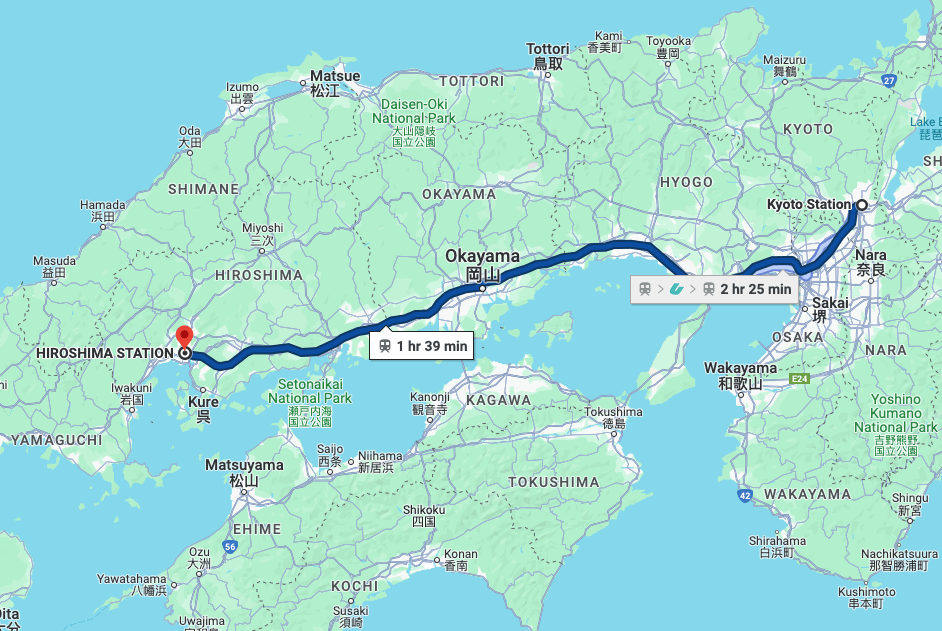
The best way to travel from Kyoto to Miyajima is to take the shinkansen bullet train down to Hiroshima.
The most efficient option for this is the Nozomi train, which will get you from Kyoto Station to Hiroshima Station in about an hour and a half.
While this is the fastest option, it’s important to note that this route is not completely compatible with the Japan Rail Pass.
This is because the Nozomi requires the purchase of a separate complimentary ticket. These tickets can be obtained upon arrival at the train station if needed.
Alternatively, if you prefer a more pass-friendly option, you can take the Hikari train from Kyoto Station to Hiroshima Station.
This route, while also direct, does take a bit longer, as travel times average about 2 hours.
Upon your arrival, you’ll have the option to choose from three nearby ferry terminals. Please see the section below on “How to Get to Miyajima From Hiroshima” for further directions.
How to Get to Miyajima From Osaka

When traveling from Osaka to Miyajima, you’ll want to catch the bullet train from Shin-Osaka to Hiroshima Station.
There are several trains that travel this route – all of which offer average transit times of about an hour and a half.
If you plan to use the Japan Rail Pass, please be aware that only the Sakura and the Hikari trains are covered by the pass. The other two trains that travel this route, the Nozomi and the Mizuho, require the purchase of a separate complimentary ticket.
Alternatively, you can also travel by local train between the two destinations. However, this does typically require several transfers and can take upwards of six hours.
Once you’ve arrived in Hiroshima, you’ll have the option to choose from three nearby ferry terminals. Please see the section below on “How to Get to Miyajima From Hiroshima” for further directions.
How to Get to Miyajima From Hiroshima

In Hiroshima, there are three ferry terminals for you to choose from. Two are located within the city of Hiroshima and one lies just south in Hatsukaichi.
Which one you choose is entirely up to you and your personal preferences.
Although, I will say the terminal in Hatsukaichi is the only option that accepts the Japan Rail Pass. So, that’s something to keep in mind, if you plan to travel using the pass.
Pro Tip: When navigating to the various ferry terminals, utilize Google Maps to help you get there! This app is one of the best navigation apps for Japan, as it syncs with local public transportation and provides accurate, up-to-date transit information.
JR West Miyajima Ferry
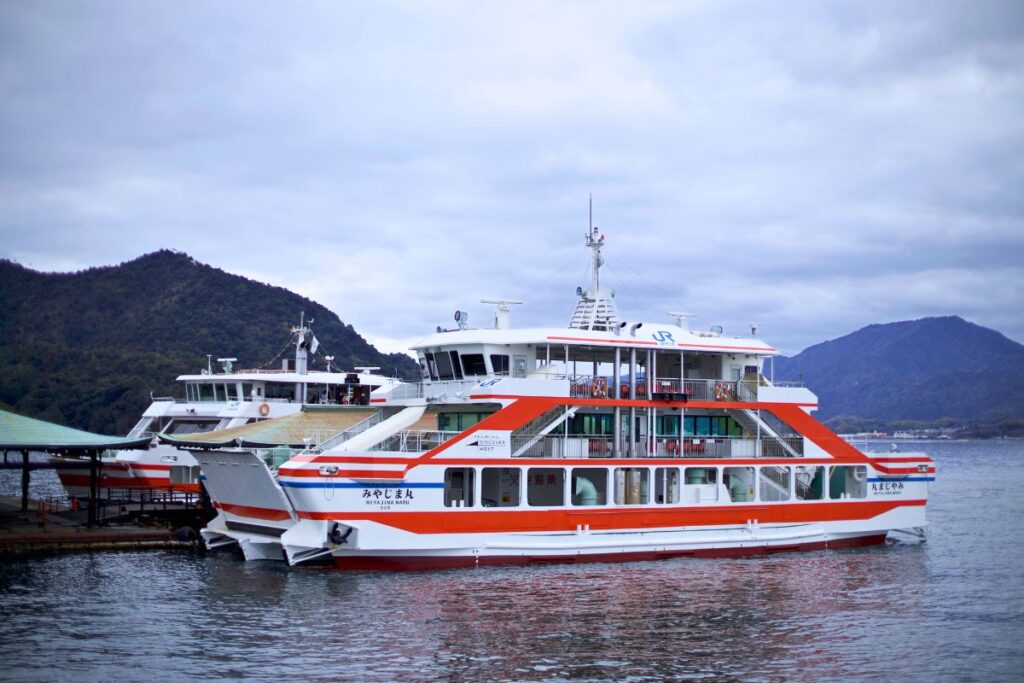
The most popular ferry – and the only one that accepts the JR Pass – is the JR West Miyajima Ferry in Hatsukaichi.
Despite its location outside of the city, this route is actually the fastest option when traveling directly from Hiroshima Station to Miyajima.
To get here, you’ll first want to board a local train on the Sa-yo Line headed for Miyajimaguchi Station. This route, which takes about 30 minutes, is direct, so no transfers are needed.
Once there, it’s a quick 2-minute walk over to the ferry terminal, where you’ll be able to scan your JR Pass and hop aboard the ferry.
If you don’t have a pass, you can also purchase tickets upon arrival.
Round-trip tickets cost 400 yen for adults and 200 yen for children between the ages of 6 and 12. Children under the age of 5 are free, but this is limited to two free children per paying adult.
The ferry ride takes about 10 minutes one way, with ferries departing every 15 minutes between the hours of 7:30 am and 6:45 pm. To see the most up-to-date departure times, check out JR West’s Miyajima Ferry schedule.
Please note: There are now two ferry companies that operate out of the Miyajimaguchi Ferry Terminal. The JR Ferry is the only one that accepts the JR Pass. The other ferry is Miyajima Matsudai Kisen. The cost for this ferry is 400 yen per adult and 200 yen per child for roundtrip tickets. Preschool-aged children are free, but this is limited to one free child per paying adult.
Aqua Net Direct Ferry
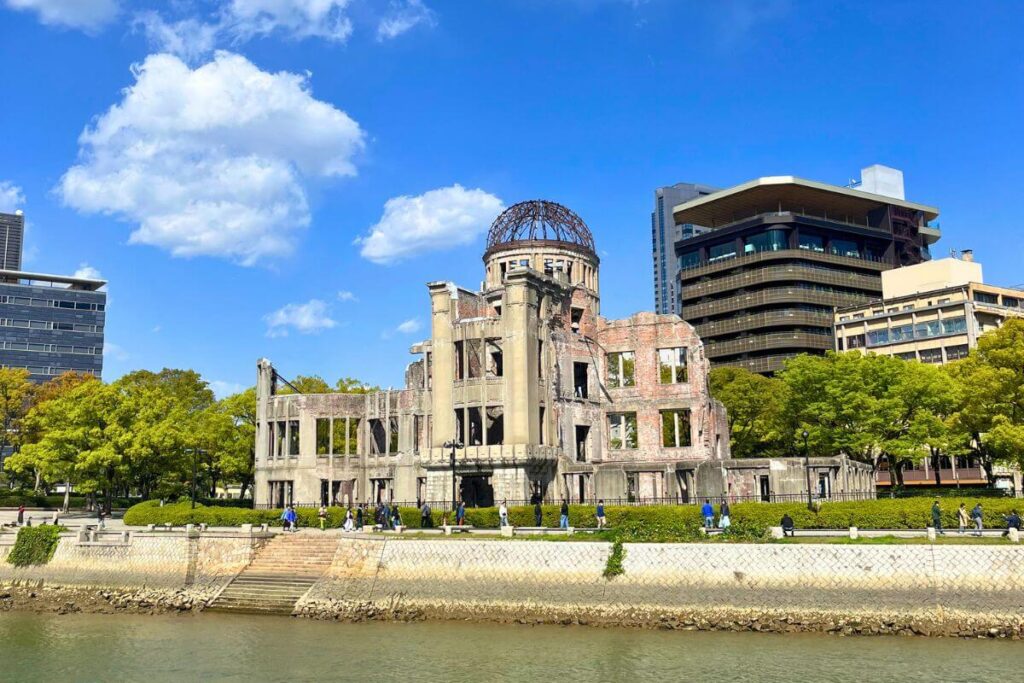
The Aqua Net Ferry departs from Hiroshima Peace Memorial Park near the Atomic Bomb Dome.
The Aqua Net Direct Ferry is another popular choice for those traveling from Hiroshima to Miyajima.
This ferry, also known as the Hiroshima World Heritage Cruise, departs from Hiroshima Peace Memorial Park and travels directly to the island.
To get to the ferry terminal, you’ll need to take a local bus or tram over to the Atomic Bomb Dome. While transit times for this can vary, it typically takes about 15 minutes when coming from Hiroshima Station.
Once there, it’s just a quick 2-minute walk over to the ferry terminal at Motoyasu Pier, which lies right next to Motoyasu Bridge.
Tickets are available for purchase at the terminal on a first-come first-served basis. So, be sure to get there early, if you’d like to depart at a specific time.
Round-trip tickets cost 4,000 yen for adults and 2,000 yen for children between the ages of 6 and 11. Children under the age of 5 are free, but this is limited to one free child per paying adult.
The ferry ride takes about 45 minutes one way, with ferries departing every half hour between the hours of 8:30 am and 5:00 pm. To see the most up-to-date departure times, check out Aqua Net’s Miyajima Ferry schedule.
Pro Tip: Round-trip tickets for this Miyajima Island ferry are valid for 2 days. So, if you decide to spend the night, your transportation back to the city is still covered!
Seto Inland Sea Steamship
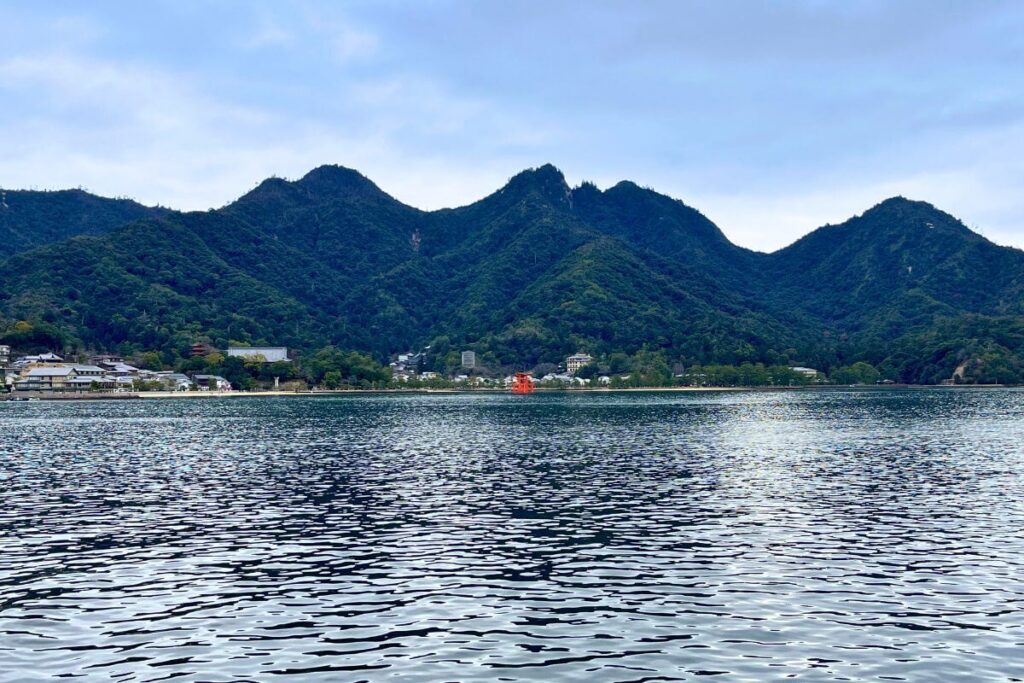
View when approaching Miyajima Island by ferry.
The Seto Inland Sea Steamship is a lesser-known option, but is still worth considering when traveling by ferry from Hiroshima to Miyajima.
This ferry departs from Hiroshima Port, stops briefly at the Grand Prince Hotel Hiroshima, and then heads on over to Miyajima Island.
To get to the ferry terminal, you’ll need to take a local bus or tram over to the Hiroshima Port Information Center. While transit times for this can vary, it typically takes about 40 minutes when coming from Hiroshima Station.
Tickets for this ferry can be reserved in advance via phone or you can purchase them upon arrival at the terminal.
However, be advised, that tickets on arrival are only available on a first-come first-serve basis. So, if you plan to do this, it’s best to get there early.
Round-trip tickets can be purchased via the “1-day Unlimited Pass,” which allows for unlimited transport to and from the ports.
The cost of this is 3,800 yen for adults and 1,950 yen for children. Preschool-aged children can board for free, but this is limited to one free child per paying adult.
The ferry ride takes about 30 minutes one way, with ferries departing once an hour between 8:30 am and 4:30 pm. To see the most up-to-date departure times, check out Seto Inland Sea Steamship’s Miyajima Ferry schedule.
Pro Tip: Be sure to bring cash with you! All payments for this Hiroshima ferry must be made in cash on the day of your trip. This payment will be submitted upon check-in, which begins 30 minutes prior to departure.
How to Get Around Miyajima Island
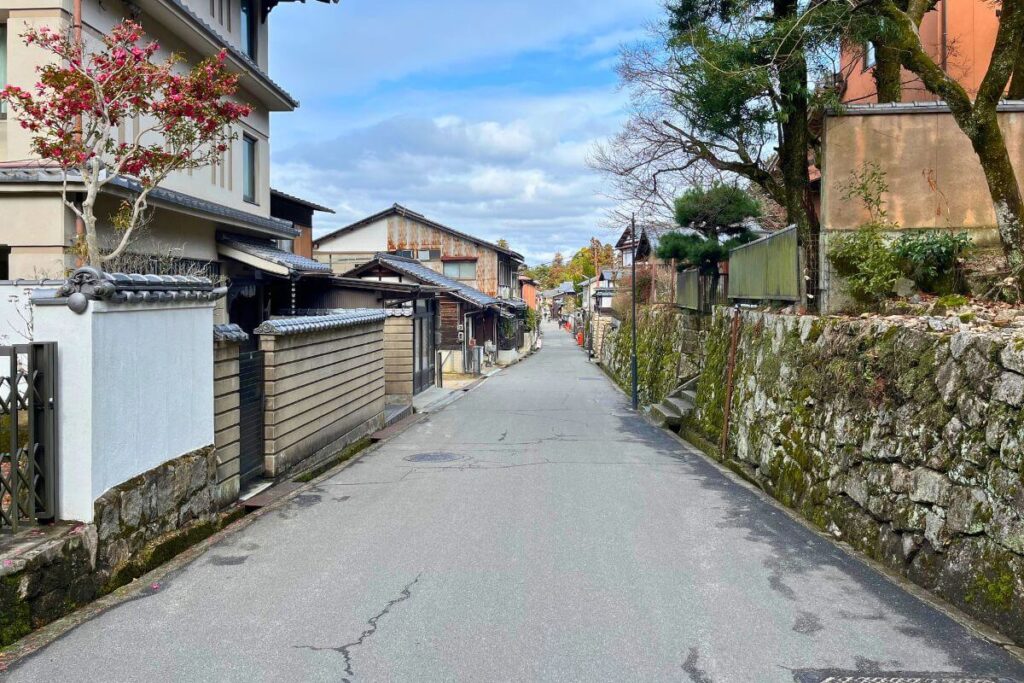
Miyajima is a very walkable destination!
The main town center of Miyajima Island is very walkable. Most attractions, restaurants, and bars are located close to each other – so you don’t really need to worry about transportation at all.
On top of this, many hotels on the island offer shuttle services. So you’re good to go, even if you opt to spend the night.
The one exception to this is if you plan to venture far off the beaten path.
The island doesn’t have public transportation and I haven’t seen many taxis there. In fact, a large part of the island isn’t even accessible by car – there simply aren’t any roads to drive on!
So it’s safe to say, you’re on your own if you hope to travel far beyond the town center. Thankfully, though, there are plenty of hiking trails for you to explore.
Map of Miyajima Island
To help you plan your trip, here’s a quick map overview of all the places mentioned in this Miyajima travel guide.

If you’d like to view an interactive version of this map, click here!
8 Incredible Things to Do on Miyajima
Now we’ve got the logistics out of the way, let’s dive in and discuss the best things to do on Miyajima Island!
Visit Itsukushima Shrine
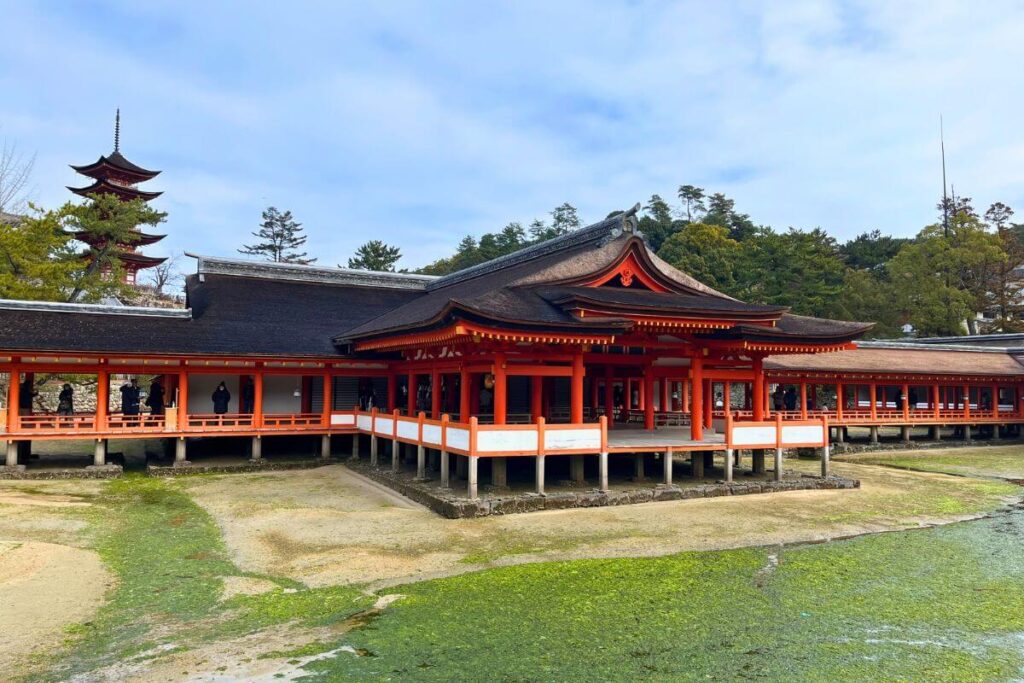
A UNESCO World Heritage Site, Itsukushima Shrine is one of the most well-known attractions on Miyajima.
In fact, the island’s official name is actually Itsukushima in honor of the shrine. Meanwhile, its more commonly used name, Miyajima, means “shrine island” in Japanese.
Needless to say, Itsukushima Shrine is incredibly important, not just to the island but to the Shinto religion as well.
Dating back to the 6th century, the shrine has existed in one form or another for more than a thousand years.
It was built in honor of three deities, who are believed to help guard Japan, protect seafarers, and ensure the welfare of the imperial family.
An active shrine to this day, the red-orange complex consists of two main halls and 17 other buildings, all constructed on stilts along the shoreline.
If you come during high tide, you can tour the shrine while surrounded by water. Meanwhile, low tide offers access to the beach and a close-up look at the shrine’s floating torii gate.
Admire the Floating Torii Gate
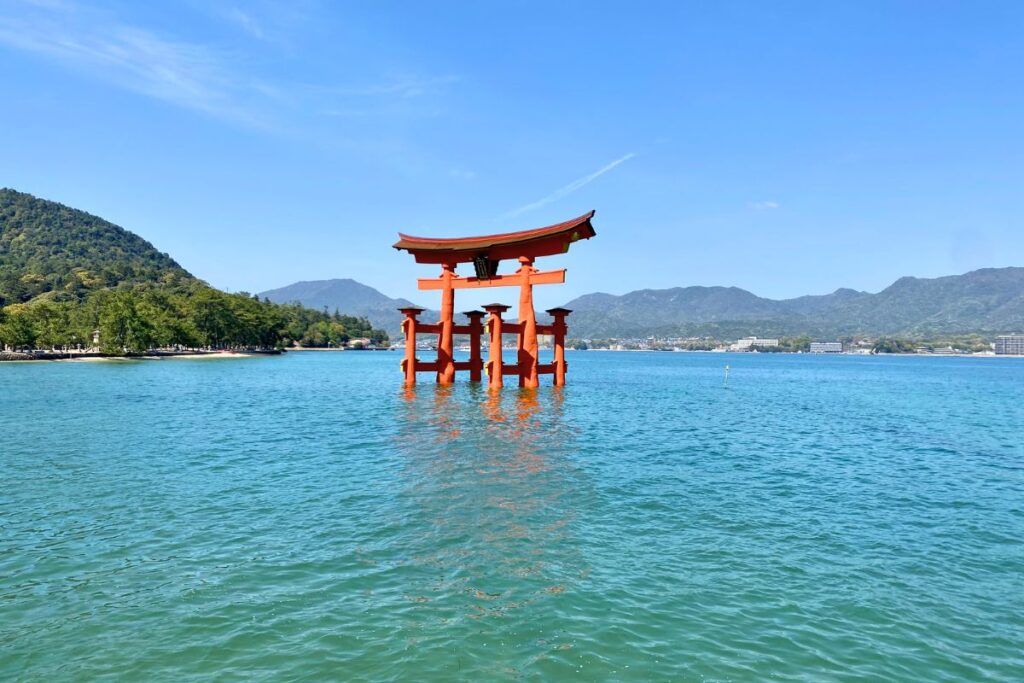
If there’s one thing that Miyajima is known for – it’s the grand torii gate that lies just off its shores.
Meant to mark the entrance of Itsukushima Shrine, this massive red-orange gate is one of the island’s most photographed sites.
Standing 16.8 meters tall and set against the backdrop of the ocean, it’s certainly a sight to behold!
And the best part is each time you come here, you’ll likely be greeted with a different view and a different experience depending on the tide.
During high tide, the gate becomes completely surrounded by water, earning it the designation of a “floating” torii gate.
While you can’t swim up to it, there are boat rides offered for those who’d like to get a closer look.
Meanwhile, low tide grants access to the beach and offers the opportunity to walk out close to the gate.
Glimpse the Five-Storied Pagoda
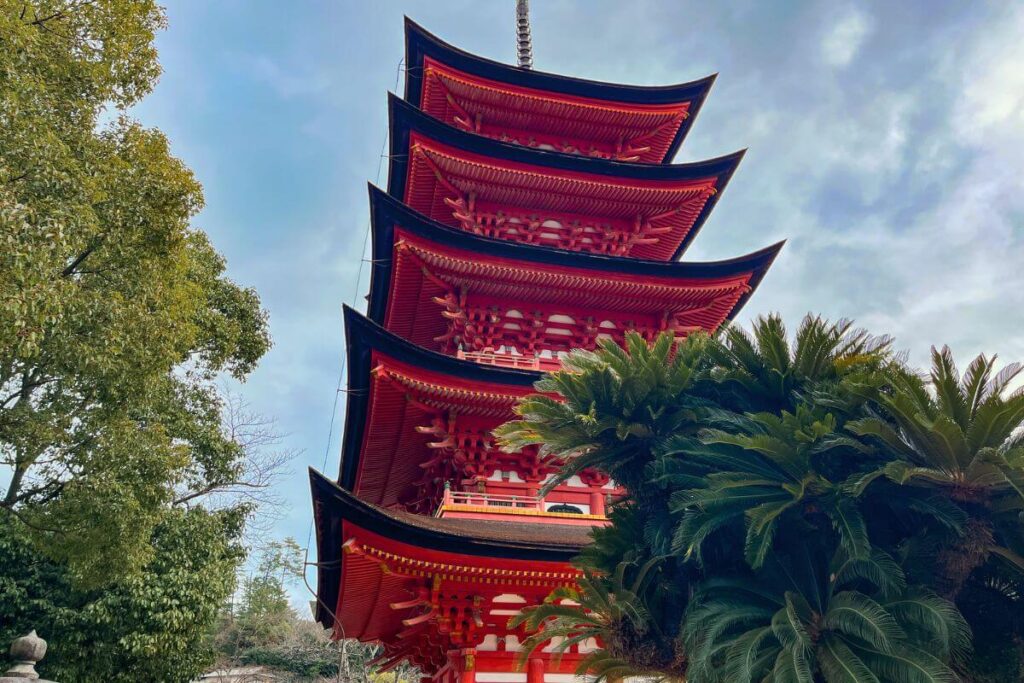
Positioned on a hill above Itsukushima Shrine, Miyajima’s Five-Storied Pagoda is a towering beacon for the island.
Built during the 1400s, this bright red-orange structure was created in honor of the Buddha of Medicine.
It stands 28 meters tall and is known for its unique design, which incorporates both Japanese and Chinese elements.
Next to it, you’ll also find the Hokoku Shrine, also known as Senjokaku or the Hall of One Thousand Tatami Mats. This unfinished Shinto shrine is the largest structure on the island.
Discover Daisho-in Temple
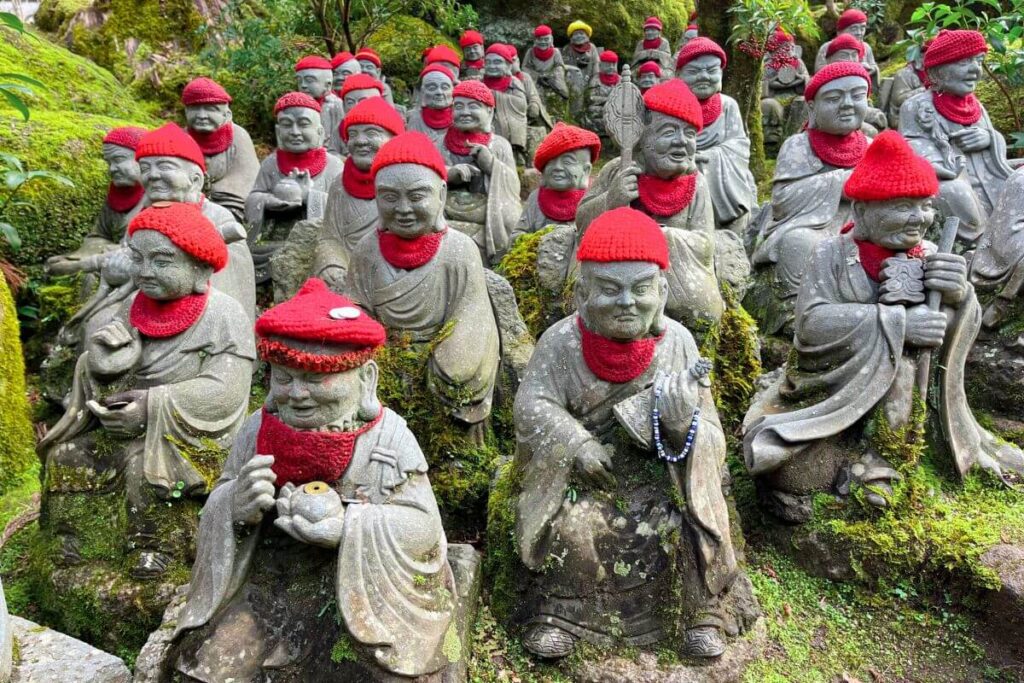
Known for its beautiful natural setting, Daisho–in is one of the most important Shingon Buddhist temples in western Japan.
Situated at the foot of Mount Misen, the temple is home to several stunning gardens, religious statues, and traditional structures.
Of particular note are the 500 miniature Buddhist statues spread throughout the complex, many of them adorned with small woven hats.
You’ll also find a cave at the back of the property, where 88 icons are placed to represent the 88 stops along the temple pilgrimage of Shikoku. Above them, lining the ceiling, are hundreds of traditional lanterns that light the room in a soft glow.
I have to say, as someone who has visited a lot of temples and shrines in Japan, Daisho-in is definitely one of my favorites. Not only is it incredibly beautiful, but it’s also super peaceful and serene.
Take the Ropeway to Mount Misen Observatory
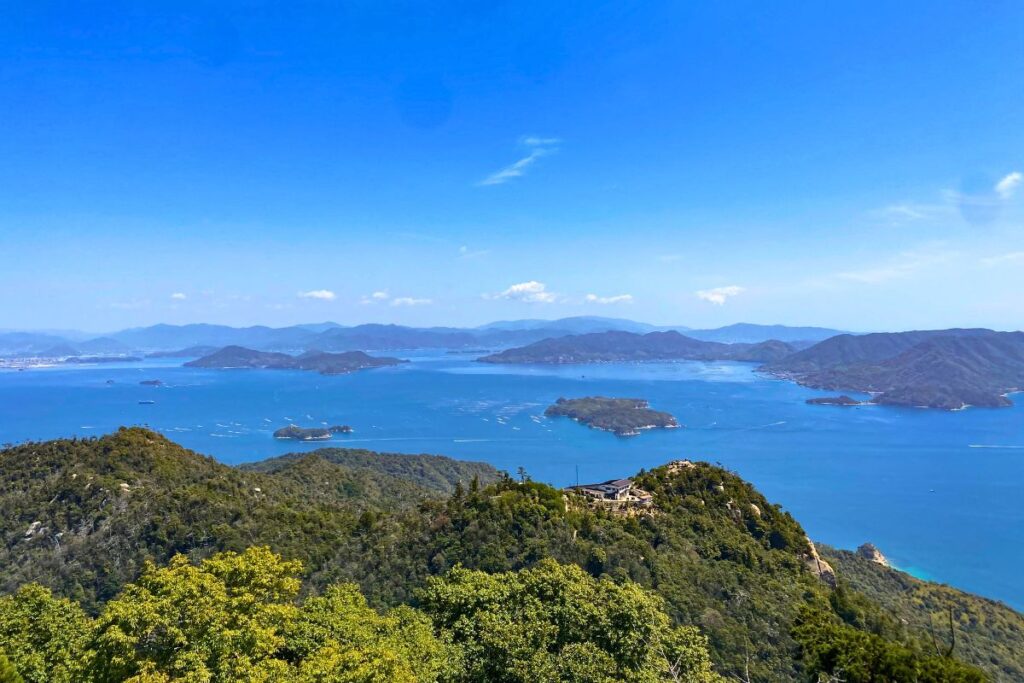
Standing at 535 meters above sea level, Mount Misen is Miyajima’s tallest peak. And at the very top of it, you’ll find a stunning observatory that offers incredible views of the island.
To get here, you can either hike up (more on that below) or take a ride on the Miyajima Ropeway.
The ropeway is open daily from 9:00 am to 4:00 pm, although closures may occur at times due to weather.
Tickets can typically be purchased on-site at the Momijidani Station. However, if your visit falls on a holiday, you’ll need to make advanced reservations online. Round-trip tickets cost 2,000 yen per adult and 1,000 yen per child.
The ride to the top of the mountain actually consists of two separate ropeways. So you get two rides for the price of one!
On the first section of the ropeway, you’ll ride a smaller gondola from Momijidani Station to Kayatani Station. Then you’ll transfer over to a larger gondola that travels on to Shishiiwa Station. In all, the ride takes about 15 minutes.
When you get off at Shishiiwa Station, you’ll need to hike about a kilometer to reach the Mount Misen Observatory. The path here can be steep and uneven at times, so it’s best to come equipped with proper footwear.
If you’re not interested in hiking, there is another observatory located close to the ropeway terminal that you check out instead.
In fact, the mountain top is full of various lookout points and attractions. So, I encourage you to explore and see as many of them as you can!
Pro Tip: The ropeway station is a bit far from town, so there’s a free shuttle service offered. It departs from Momijidani Park entrance every 20 minutes, beginning at 9:50 am.
Hike Mount Misen
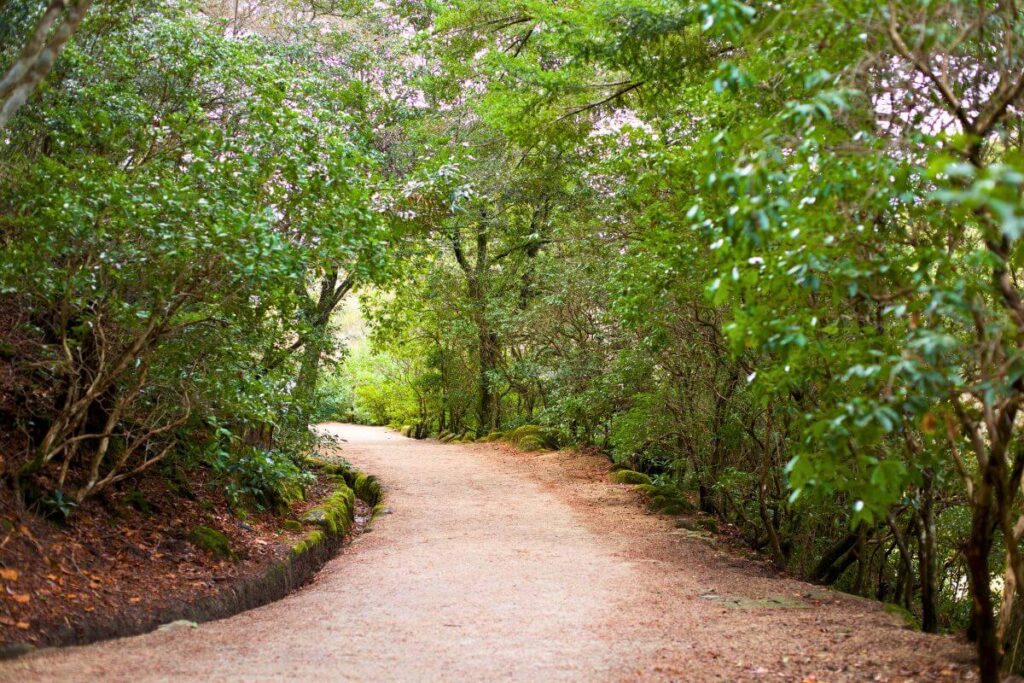
If you’re up for a bit of adventure, you can hike Mount Misen. Or, alternatively, take the ropeway one way and hike the other way!
There are a total of three hiking trails available that lead to the mountain’s summit.
The shortest, but steepest is the Momijidani Course. Departing near Momijidani Ropeway Station, it takes about an hour and a half to reach the summit along this trail.
Another option is the Daisho-in Course, which is said to offer the best views. The trailhead for this one is located just before Daisho-in Temple and takes about 1.5 – 2 hours to hike up.
And finally, there’s the Omoto Course, the longest and arguably hardest trail. Beginning in Omoto Park, it takes about 2 hours to hike up to the summit.
It’s important to note that all of these trails are pretty strenuous and quite steep. Given this, I don’t recommend utilizing them if you aren’t at least somewhat experienced with hiking.
As a former avid hiker myself, I found the trails to be a bit harder than expected. Not impossible, but I was certainly sore the next day. (For reference, I hiked up the Momijidani Course and came back down along the Daisho-in Course.)
That being said, the views are absolutely phenomenal and I’m so glad that I had the opportunity to hike up Mount Misen – at least once!
Pro Tip: Be on the lookout for wildlife and keep a safe distance. There are poisonous snakes that live here, so be mindful about where you step!
Spend Time with Miyajima’s Sacred Deer
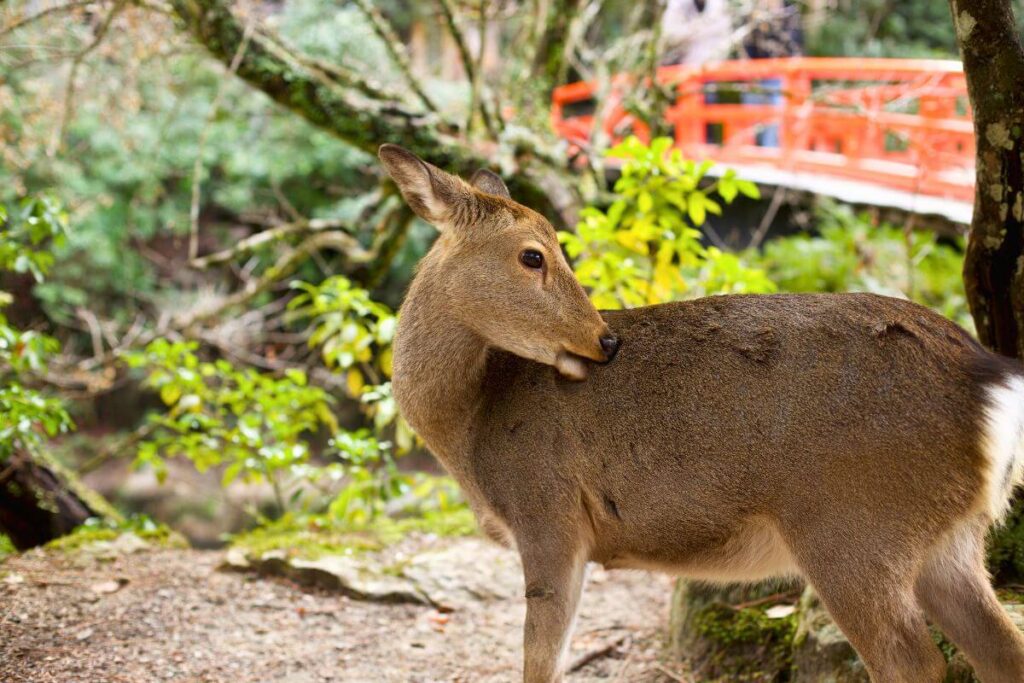
Aside from its incredible cultural sites, the island of Miyajima is also known for its local population of Sika deer.
These wild but tame animals were once thought to be sacred messengers of the gods.
Today, they freely roam the island, interacting with visitors and locals.
If you happen to encounter them (which is very likely), feel free to pet them and take a few photos, but do not feed them.
Authorities are worried that the deer have become too reliant on human food, and as a result of this, they’ve implemented a feeding ban.
This is being done in an attempt to return them to a more natural state.
Despite this, the deer will still try and grab food from you – and they can be very, very persistent. So keep all snacks (and paper) out of reach!
Yes, I said paper – the deer on Miyajima have been known to snatch paper out of open bags and eat it!
🌟 Be sure to also check out Nara 🦌 and Nagano 🐒 for more wildlife experiences!
Explore the Shops of Miyajima Island
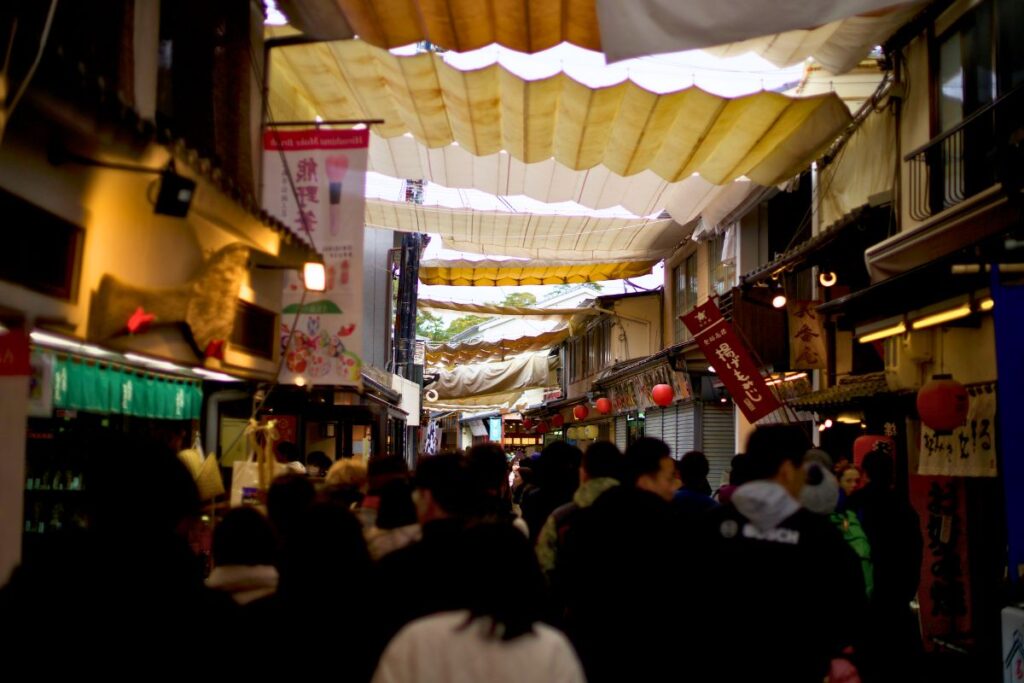
Before departing the island, be sure to stop by Omotesando Shopping Street to grab a few souvenirs to take home with you!
This large street, which runs through the center of town, is home to a variety of local shops, food carts, bars, and cafes.
It’s a great place to take a break, grab a bite to eat, and purchase a few goodies to take home for yourself or your loved ones.
What to Eat on Miyajima Island
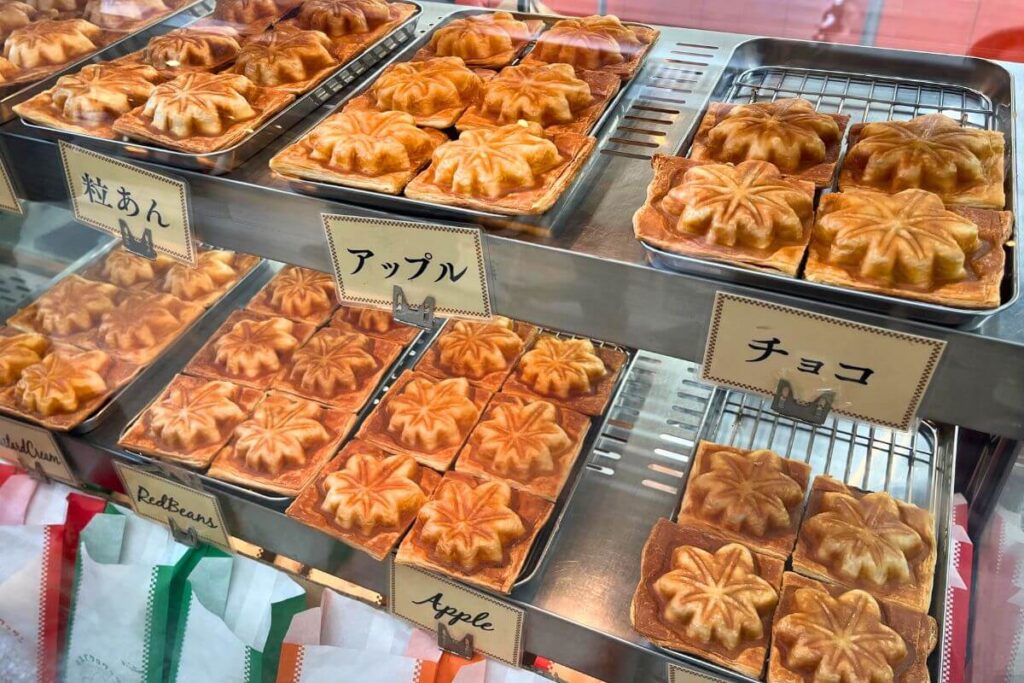
Momiji Manju for sale on Omotesando Shopping Street.
Miyajima may be a small island, but it’s still made a name for itself in the culinary world. In fact, the island is famous for several dishes and even offers its own craft beer. While you won’t have time to sample it all, here are a few can’t-miss foods to keep in mind!
- Fresh Oysters: Miyajima is known for its oysters, which come directly from the surrounding seas. You can try them raw, fried, boiled, or grilled.
- Oyster Curry Bread: A unique creation, oyster curry bread is essentially a fried dough ball filled with curry and whole oysters. Many times the curry that is used is a mild beef curry.
- Momiji Manju: A local specialty on Miyajima Island, Momiji Manju is a cake-like dessert molded into the shape of a maple leaf. It’s traditionally filled with red bean paste, but many vendors now offer a variety of flavors, including chocolate, matcha, and custard. You can get them fried or baked.
- Anago-Meshi: Originating from Miyajima, Anago-Meshi is broiled conger eel served on top of rice. Conger eels are found in the waters surrounding Miyajima and have traditionally been a part of the local cuisine for centuries.
- Craft Beer: It’s not food, I know, but craft beer is still worth mentioning! At the Miyajima Brewery, you can try a variety of local brews including pale ale, lager, and weizen.
Where to Stay on Miyajima Island
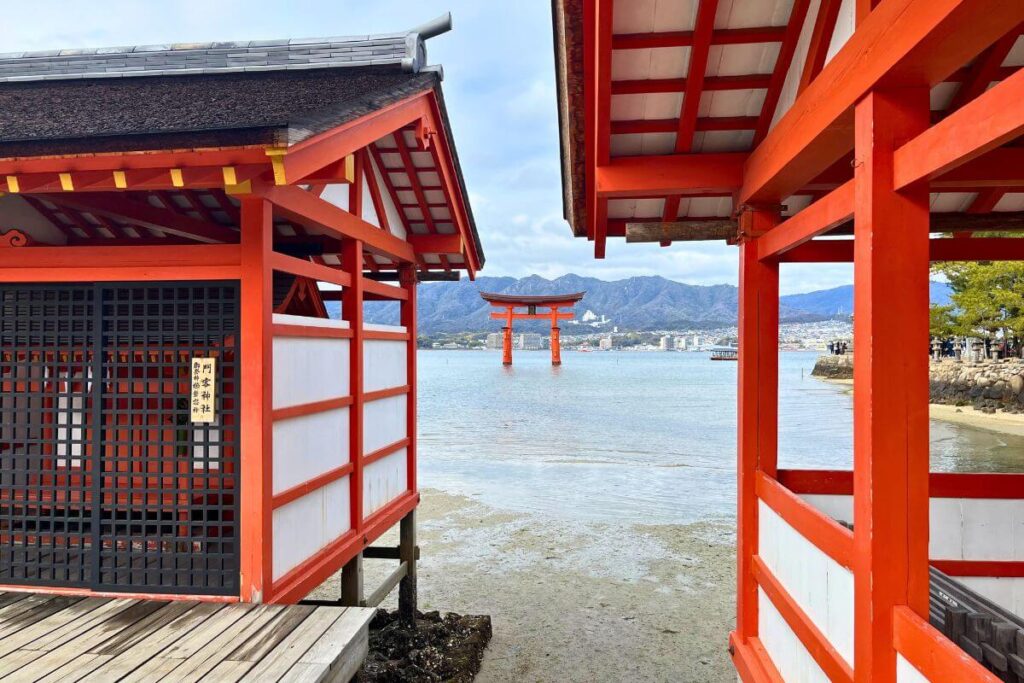
If you have the time to spare in your itinerary, you should consider spending the night on Miyajima Island.
While I haven’t yet had the chance to do so, I know others who have and they’ve said it’s amazing!
In the evening and early morning hours, there are significantly fewer people – which means you’re able to explore the island without the crowds.
That being said, accommodations are limited and book up quickly, so it’s best to make your reservations in advance.
You’ll find that most, if not all, hotels and guest houses are located in the center of town. So, this is likely where you’ll end up staying.
A few of the most popular properties on the island include Miyajima Grand Hotel Arimoto, Iwaso Ryokan, Kikunoya, Hotel Miyajima Villa, and Guest House Mikuniya.
Frequently Asked Questions About Visiting Miyajima, Japan
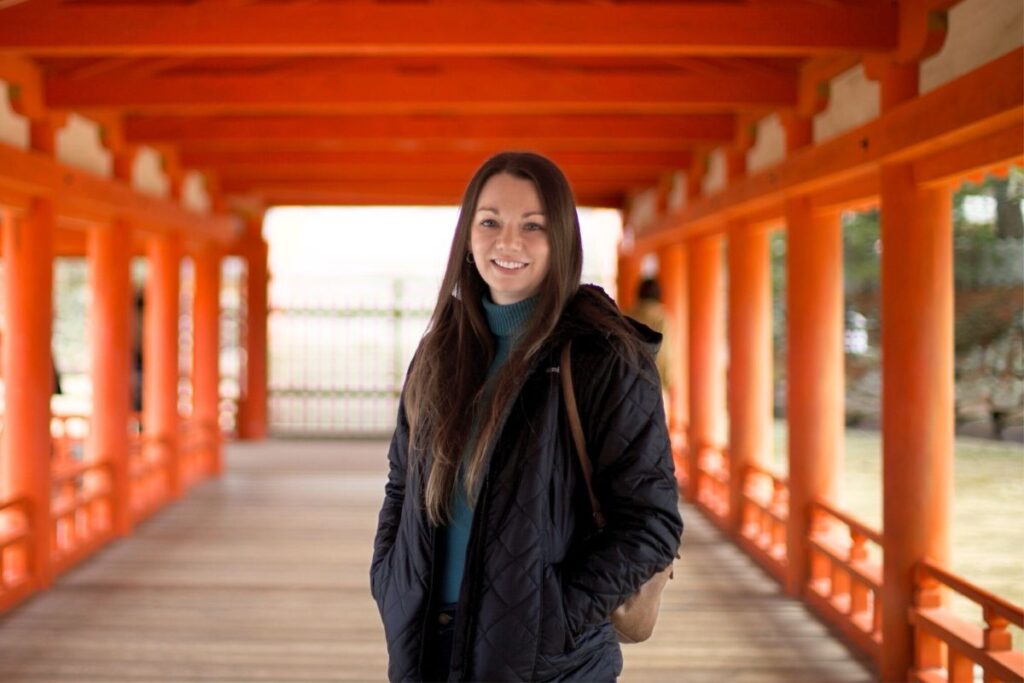
Here are my thoughts on some commonly asked questions about traveling to Miyajima Island.
What Makes Miyajima So Special?
Miyajima Island has been considered a sacred site for centuries. In ancient times, it was even believed to have been worshiped as a god, according to some scholars. Revered for its natural beauty and divine atmosphere, the island has captivated and intrigued visitors throughout history. Couple this with its incredible shrines, vibrant torii gates, and towering pagodas – and it’s easy to see why so many people flock to Miyajima Island.
Is Miyajima Island Worth Visiting?
Yes, Miyajima is undoubtedly worth visiting! It may be a small destination, but it has so much to offer. From stunning shrines to friendly deer, incredible natural scenery, and adventurous activities, there’s something for everyone here. Whether it’s your first time in Japan or your third, Miyajima makes a great addition to any Japan itinerary!
When is the Best Time to Visit Miyajima?
While Miyajima is open to visitors year-round, the best time to visit is in the spring or the fall. Generally speaking, both of these seasons offer pleasant weather with mild temperatures. In addition, the island is incredibly beautiful during these seasons. In the spring, cherry blossoms and flowers blanket the landscape. Meanwhile, fall brings with it the vibrant colors of autumn.
How Much Time Do You Need in Miyajima?
You can spend as much or as little time as you’d like here! Although, if you really want to hit up all the major sites, I recommend taking a full-day trip to Miyajima Island. There’s plenty to do here, so you’ll have no problem filling up your itinerary.
Can You Do Hiroshima and Miyajima in One Day?
If you’re short on time, it’s definitely possible to do both Hiroshima and Miyajima in one day. Just keep in mind, you won’t have much time to explore either destination. You’ll pretty much be limiting yourself to the major attractions. That being said, if it’s the only option you have, I say go for it. Although, I do recommend joining a guided tour for this, as everything will be prearranged and booked for you.
Final Thoughts: How to Get to Miyajima Island
So, there you have it! My complete guide on how to get to Miyajima – and what to do while you’re there! Hopefully, this article is helpful in planning your own trip to one of Japan’s most sacred islands.
Regardless of how you get there, you’re sure to have an incredible time! After all, Miyajima is a truly stunning destination, one that offers the unique opportunity to glimpse the natural and cultural beauty of Japan!
Are you planning on visiting Miyajima Island in Japan? If so, what are you most looking forward to? Let me know in the comments below!
Like this post about Miyajima Island? Pin it now for later!
